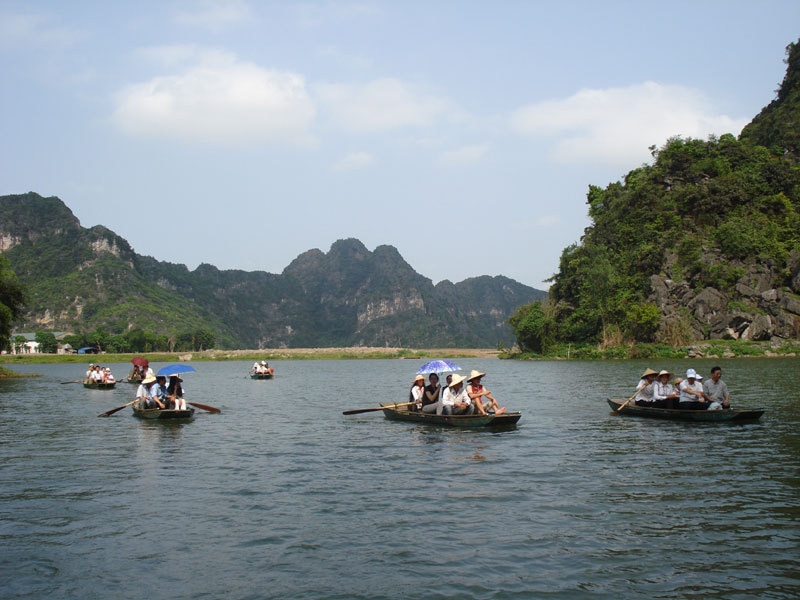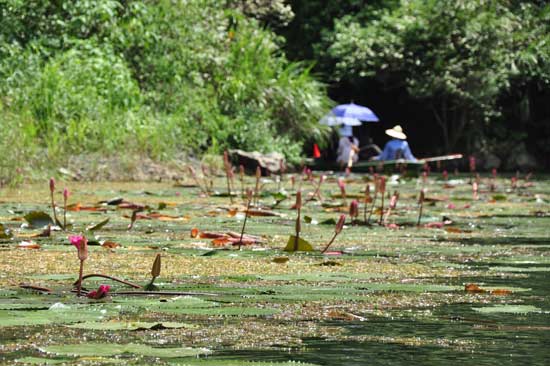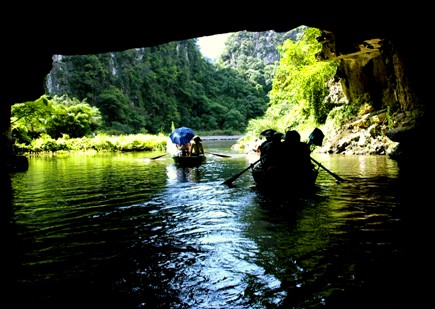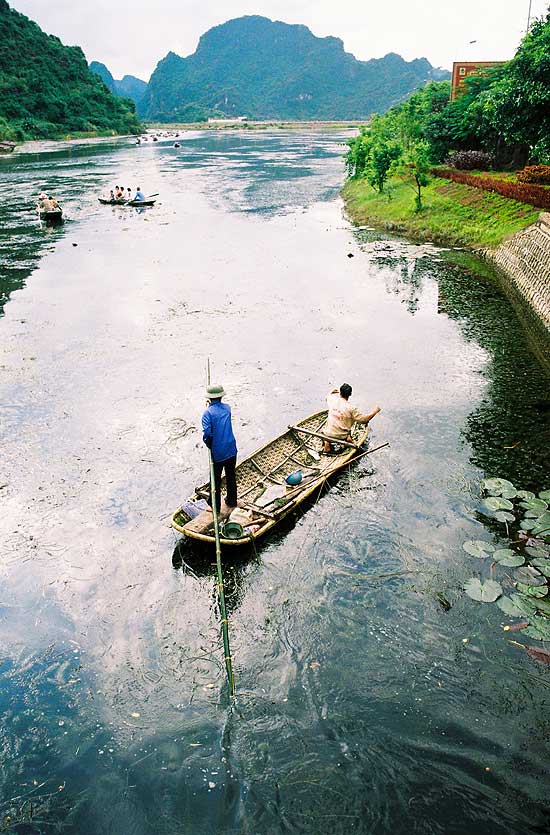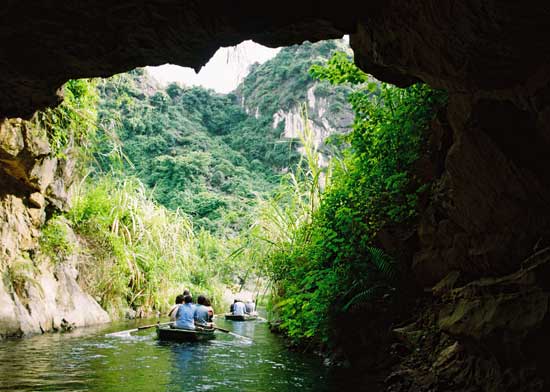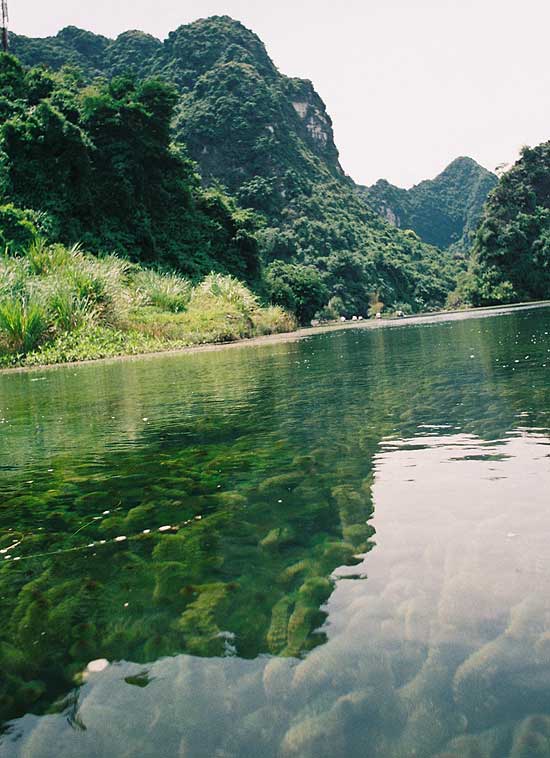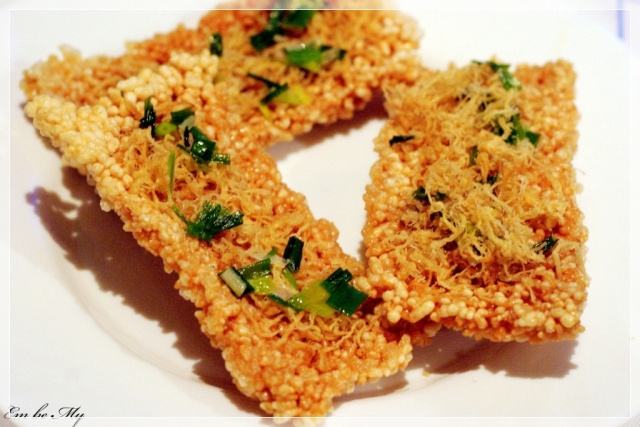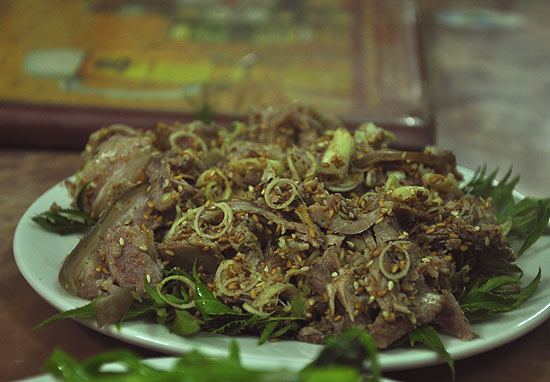Vietnam,
S-shaped country, has 54 ethnic groups with different languages. The
majority group in Vietnam is the Vietnamese-speaking Kinh and Vietnamese
is the official language. Many older Vietnamese are familiar with
French or English. Interest in English has been rising, with language
schools opening throughout the country.
Like
English,
Vietnamese uses the Roman alphabet, but otherwise the
languages are very different. Every word in Vietnamese has only one
syllable, and the language is based on tone. There are up to six tones,
and what looks like the same word can have different meanings according
to the tone used by the speaker.
Tones are high, low, falling or
wavering, like notes on a scale. For example, the word ma has six
different meanings: "mother" with a high falling tone, "ghost" with a
high flat tone, "grave" with a low to rising tone, and so on. In
writing, one of five accents (or none) is placed above or below a word's
vowel to indicate the tone.
The
Vietnamese value modesty and humility about one's accomplishments, and
harmonious relations with others. Seeking to avoid conflict in
relationships, they often prefer to speak about sensitive subjects
indirectly.
Outside of large cities, making direct eye contact when
talking to someone is considered impolite; similarly, Vietnamese usually
speak in a low tone. Although when shopping the Vietnamese barter over
prices, this process is done politely; aggression is considered rude.
The
Vietnamese sometimes appear to answer "yes" (dạ) to all questions.
However, this yes may be a polite way of saying "Yes, I am listening,"
or "Yes, I am confused," or "Yes, I do not want to offend." Similarly,
the Vietnamese smile can be used to show all sorts of emotions, from
happiness to anger or even grief. Strong emotions are shared only with
family or close friends. Humour, however, is freely expressed.
Traditionally,
Vietnamese greet each other by joining hands and bowing slightly;
however, in cities some men have adopted the Western practice of shaking
hands. In public, men often hold hands as an expression of friendship.
Hugging, however, is reserved for relatives.
| English | Vietnamese |
| Hello | Chào |
| Please | Xin làm ơn |
| Thank you very much | Cám ơn (bà/cô/ông/em) nhiêù |
| You're welco |
Không có chi / Không dám
|
| Yes/No | Dạ/Không |
| What is your name? | Tên (bà/cô/ông/em) là gì? |
| Friend | Bạn |
Today, more and more foreigners come to visit this small beautiful land and explore
Vietnamese customs
and habits, especially they want to know about the diversity of the
languages here.
